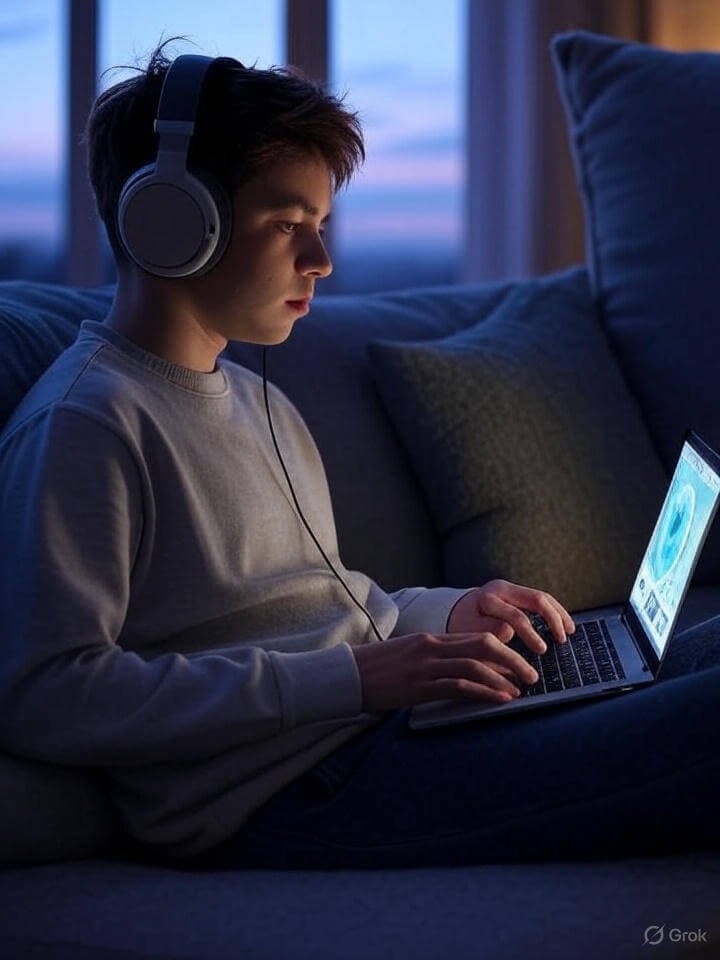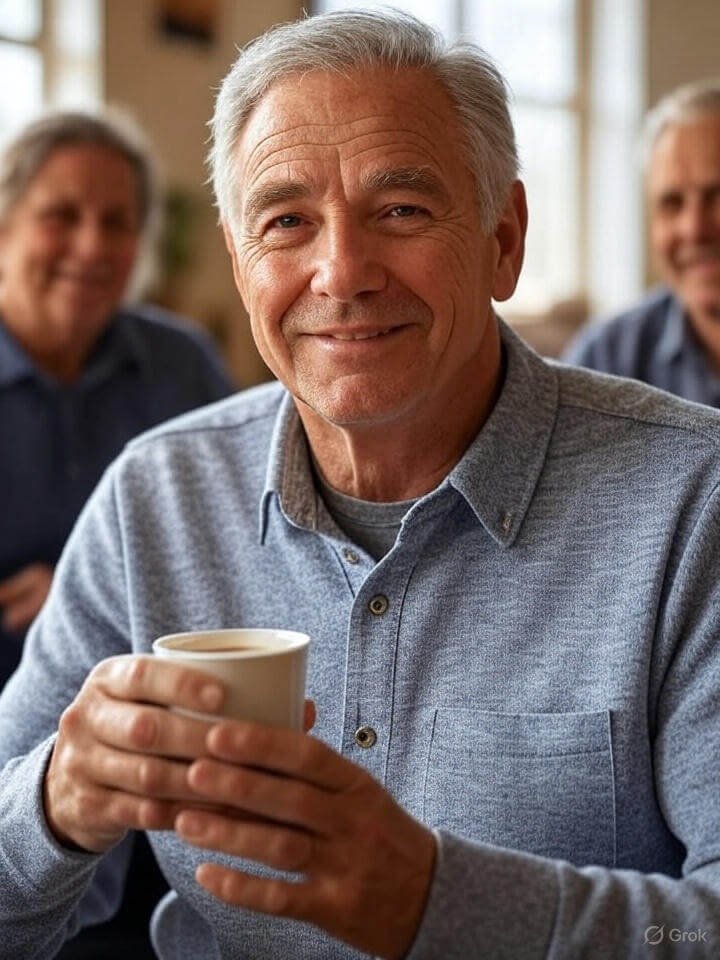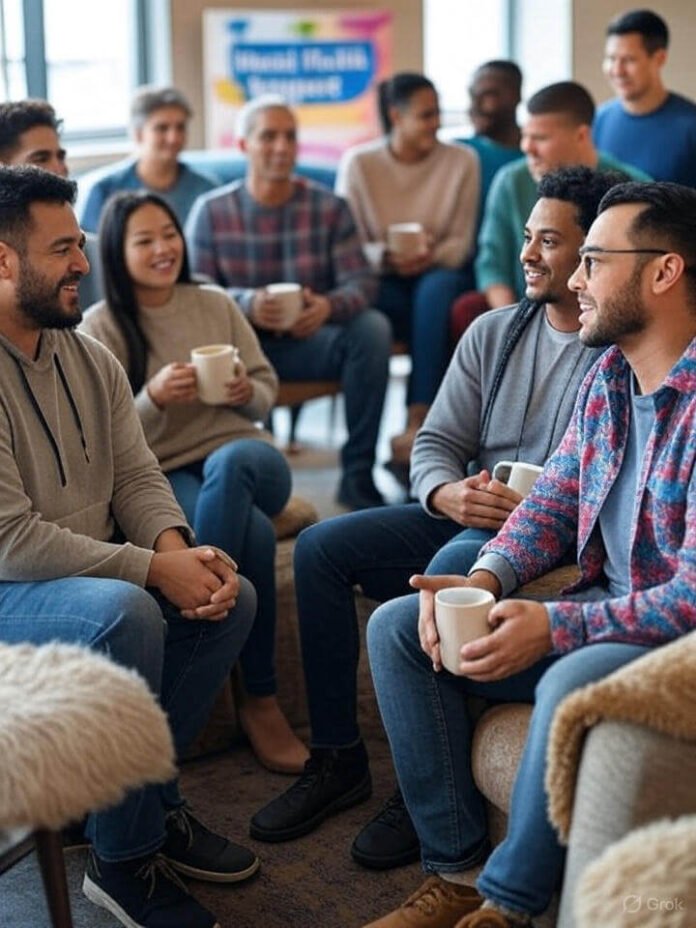How mental health programs are changing lives….Last month, I found myself sitting in the parking lot of a community center, staring at a giant banner that said “Free Mental Health Program – Walk-Ins Welcome!” I wasn’t even there for me—I was picking up a friend—but I ended up walking in because… well, curiosity mixed with a little burnout.
The first thing that hit me wasn’t the smell of coffee (although yes, they had that) but this soft hum of relief, like a room full of people collectively exhaling. It was weirdly comforting. And I thought, man, nobody talks enough about how these mental health programs are literally changing lives across the country.
The Moment I Realized These Programs Actually Work
So, let’s back up.
For years, I thought “mental health programs” were just those pamphlets in hospital lobbies or maybe a once-a-year seminar at work where everyone awkwardly nods and grabs a stress ball. Spoiler: I was very wrong.
That day in the community center, I met a guy named Tom (not his real name—he had that “don’t put me on the internet” vibe). He told me he’d started coming after his panic attacks got so bad he couldn’t drive to work. After six months in their weekly group and one-on-one counseling program, he said:
“I actually went to the grocery store last week and didn’t feel like the walls were closing in. First time in two years.”
And the way he said it—like he’d just finished a marathon—stuck with me. I realized these programs aren’t just “nice to have.” They’re lifelines.
The Different Kinds of Programs Popping Up Everywhere
The coolest part about how mental health programs are changing lives across the country? They’re not one-size-fits-all. You can find a program that fits your vibe—even if you’re not a “sit in a circle and talk about feelings” person.
Here are the ones I’ve seen (and sometimes tried because, why not?):
1. Community-Based Support Groups
These are usually free, in churches, libraries, or community centers.
- You walk in, sit down, and just… talk. Or listen.
- You quickly realize you’re not the only one who sometimes cries in the car before work.
I met a mom here who said the weekly group was “better than her anti-anxiety playlist,” which made me laugh because, same.
(Outbound link suggestion: Check out NAMI’s free community programs)
2. Workplace Mental Health Programs
Okay, hear me out: some workplaces are actually trying now. My cousin works at a tech company that gives “mental health PTO” and offers free therapy sessions.
- Virtual group workshops
- On-site counselors
- Mindfulness breaks that aren’t just corporate yoga pretending to fix burnout
I low-key used to roast these programs, but she swears it kept her from quitting during her “I hate everything” phase.
(Internal link suggestion: Why Mental Health Support is Crucial for Your Wellbeing in 2025)
3. School and College Programs
Back in my day (aka 2008), the school counselor was basically a schedule fixer. Now? High schools and colleges are offering:
- Peer-led mental health clubs
- 24/7 crisis text lines
- Workshops on stuff like “How to Survive Finals Without Imploding”
I visited a local high school program where kids literally had a “chill room” with beanbags and coloring books. Teenage me would’ve lived there.
4. Online and App-Based Programs

Not everyone wants to leave the couch—and honestly, respect.
- Apps that offer therapy sessions, mood tracking, and guided exercises
- Zoom support groups (pajamas optional)
- 24/7 chat lines if 2 AM anxiety is your nemesis
A friend of mine swears by this because he travels for work and couldn’t commit to in-person anything. He once did a session from an airport lounge. Iconic.
The Benefits Nobody Warned Me About
I expected therapy and programs to maybe reduce stress or help with panic attacks. I did not expect the random side effects, like:
- Laughing again. Like, actually finding things funny without a cloud over your head.
- Better sleep. I didn’t realize how much anxiety was robbing me of full REM mode.
- Friendships. I left one community program with two friends who now send me memes about stress-eating Pop-Tarts.
One woman in a veterans’ program told me:
“I thought I was just coming here to stop feeling so low. Turns out, I started living again.”
Chills.
Stories That Make You Believe in This Stuff
I can throw stats at you (like, did you know workplace mental health programs can reduce absenteeism by 28%?), but honestly, it’s the stories that get me.
- The single dad who joined a local support program and now runs 5Ks with his group every Saturday.
- The college freshman who avoided dropping out because she found a late-night peer chat program.
- The retired nurse who finally learned to manage her grief after joining a seniors’ mental health group.
Real people. Real shifts.

The Ripple Effect Across Communities
Here’s what’s wild: when people get the help they need, it doesn’t just change their lives. It changes neighborhoods.
- Fewer ER visits for mental health crises
- Parents showing up more for their kids
- Workplaces with less burnout chaos
- Random acts of kindness going up (okay, that one’s anecdotal, but I swear it’s real)
And programs don’t have to be huge to make a dent. Sometimes, it’s one volunteer-led group in a library basement making the difference between “barely hanging on” and “actually okay.”
Why You Shouldn’t Wait for Rock Bottom: How mental health programs are changing lives
Look, I get it. Signing up for a program can feel like admitting defeat. But here’s my hot take:
Waiting until you’re on the bathroom floor crying over spilled mac and cheese is… optional.
I’ve seen people join these programs “just to try it” and leave feeling like someone finally hit a mental reset button.
So, if there’s a free workshop, online program, or library flyer calling your name—answer it. Your future self will want to hug you.
(Outbound link suggestion: Mental Health America’s free screening tools)
Internal Links Added:
Outbound Links Added:
































